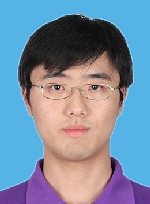报告题目:Piezomagnetism and noncollinear spin current without spin-orbit coupling
报告人:Junwei Liu,Hong Kong University of Science and Technology 教授
报告时间:2023年11月06日 9:30
报告地点:伟德BETVlCTOR1946中心校区唐敖庆楼B521报告厅
报告简介
In this talk, I will take our recently proposed new type of spin-valley locking (SVL), named C-paired SVL, in antiferromagnetic systems. It directly connects the spin/valley space with the real space, and hence enables both static and dynamical controls of spin and valley to realize a multifunctional antiferromagnetic material. The new emergent quantum degree of freedom in the C-paired SVL is comprised of spin-polarized valleys related by a crystal symmetry instead of the time-reversal symmetry. Thus, both spin and valley can be accessed by simply breaking the corresponding crystal symmetry. Typically, one can use a strain field to induce a large net valley polarization/magnetization and use a charge current to generate a large noncollinear spin current. We predict the realization of the C-paired SVL in monolayer V2Se2O, which indeed exhibits giant piezomagnetism and can generate a large transverse spin current. Based on symmetry analysis and first-principles calculations, we also found C-paired SVL can exist in the following experimentally verified AFM materials, NaOsO3, LaMnO3, LaCrO3, TbFeO3, MnTe, RuO2, MnF2, FeF2, CoF2, and NiF2. All these predicted phenomena have been confirmed in recent experiments in RuO2 and MnTe. Our findings provide new opportunities to integrate various controls of spin and valley with nonvolatile information storage in a single material, which is highly desirable for versatile fundamental research and device applications.
报告人简介

Prof. Junwei Liu obtained his PhD in the department of physics, Tsinghua University, in 2014, and then he started his postdoctoral research in Massachusetts Institute of Technology. He joined Hong Kong University of Science and Technology in 2017.
Prof. Liu has a very broad interest in condensed matter physics and quantum physics, varying from the traditional phenomena like ferroelectricity to the exotic topological phases like quantum spin Hall insulators. Currently, his research focuses on two parts: 1) explore new phase of quantum matter including both symmetry-breaking phases and topological phases, and their novel properties, material realizations, experimental signatures, and potential applications; 2) combination of advanced machine learning techniques and quantum physics, especially the combination of machine learning techniques and quantum Monte Carlo simulations and all optical neural networks. He was awarded National Natural Science Foundation of China Excellent Young Scientist (Hong Kong and Macau) in 2020.
举办单位:
bv伟德国际体育
物质模拟方法与软件教育部重点实验室